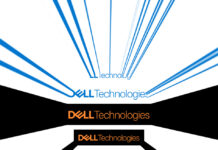Data pipeline automation vendor Ascend.io announced an integration that allows users to scale and run sophisticated dbt models in production with a single command, giving data and analytics engineers access to Ascend’s advanced orchestration capabilities with no added overhead.
…
Open source ETL connector supplier Airbyte has partnered with generative AI platform supplier Vectara to deliver an integration that makes it easier for developers to build scalable enterprise-grade GenAI applications using Large Language Models (LLMs). Vectara’s technology works on businesses’ own data and is referred to as “RAG-in-a-box”.
…
Data protector and cyber resilience supplier Commvault announced the appointment of Darren Thomson as its new Field CTO, EMEA & India (EMEAI).
…
On January 31, Continuity Software is running a live webinar with Dell to help organizations secure their backups. Sign up here. It reminds us about the new Akira ransomware attack that’s been wiping NAS and backup devices. This is the third publicized cyberattack on backups in recent months. To help secure your backup and data protection environment, here are a couple of Continuity resources:
- Read the blog post: “The CISOs Guide to Backup & Storage Cyber Resiliency” here.
- Watch this video simulation to see how threat actors can exploit security misconfigurations & vulnerabilities in backups:
…
Lakehouse supplier Databricks launched its Data Intelligence Platform for Communications. Telecoms organizations can use it to predict demand patterns, democratize data insights, and enrich their products. They can also:
- Use all types of data to improve customer experience and support
- Seamlessly govern all data types, machine learning models, notebooks, dashboards, and files on any cloud
- Enable inexpensive and open collaboration
…
DataStax announced GA of its Data API for GenAI that provides the data and stack for production GenAI and retrieval augmented generation (RAG) applications with high relevancy and low latency. It also announced an updated developer experience for its Astra DB vector database for building AI applications. The new vector Data API and experience makes Apache Cassandra available to JavaScript, Python, or full-stack application developers in a more intuitive experience for AI development. It is specifically designed for ease of use, while offering up to 20 percent higher relevancy, 9x higher throughput, and up to 74x faster response times than Pinecone, another vector database, by using the JVector search engine. It introduces an intuitive dashboard, efficient data loading and exploration tools, and seamless integration with leading AI and machine learning frameworks.
…
Dremio says Gartner is wrong. It tells us that, last year, Gartner predicted that data mesh might be supplanted by a different approach before reaching full maturity. New survey data from Dremio reveals that 97 percent of survey respondents expect data mesh implementation to continue expanding in the next year. While more than half have already fully implemented a data mesh strategy, about a third have partially implemented. Some of the top objectives of implementing a data mesh are:
- Improved data quality (64 percent)
- Data governance (58 percent)
- Agility, scalability, improved data access, and improved decision-making
In the future, data mesh will continue to be driven more by business units rather than centralized IT teams, stressing the importance of having a data mesh strategy for overall business success in 2024 and beyond.
…
Multi-cloud data security supplier Fortanix expanded its exec team to support the company’s continued growth. New appointments include Linda Chen, Chief Marketing Officer; Anuj Jaiswal, VP of Products; Iulia Stefoi-Silver, VP of Strategic Alliances and Partnerships; and Andy Buckland, VP and GM EMEA.
…
Data protector N-Able launched its Managed Detection and Response (MDR) that combines a security operations platform designed for collaboration and transparency with expert human oversight. N-able MDR provides deep visibility and collaboration between MSPs, end-user organizations, and when needed, expert security analysts. This offering also gives organizations of all sizes everything they need to stop advanced cyberthreats, reduce vulnerabilities, and take control of sprawling IT environments.
…
The first European exascale supercomputer, Jupiter, will feature Nodeum as its data mover service to manage the data movement between the parallel flash module and the parallel disk-based ExaSTORE. The flash storage module provides scratch space with a capacity of over 20 PB and a bandwidth of >2 TBps. The ExaSTORE module has more than 300 PB of raw capacity as well as a tape infrastructure for backup and archive purposes with over 700 PB capacity. Nodeum is partnering with the ParTec – Eviden consortium to deliver Jupiter’s data mover service. Jupiter will be the first exascale modular supercomputer in Europe and hosted at Forschungszentrum Jülich in the German state of North Rhine Westphalia. The system, designed for the largest possible simulations and AI applications in science and industry alike, is expected to launch in 2024. It will be operated by the Jülich Supercomputing Centre (JSC), one of the three national supercomputing centers of the Gauss Centre for Supercomputing (GCS).
…
HCI vendor Nutanix is getting upgraded by William Blair analysts from Market Perform to Outperform status because the disruption in the infrastructure software space stemming from Broadcom’s recent acquisition of VMware is turning out to be more significant than they expected, with Broadcom taking VMware’s top accounts direct; raising prices; eliminating traditional product bundles, incentives, and deal registrations; removing the ability to sell perpetual licenses; and lifting the threshold for the roughly 50,000 VMware VARs to qualify for the Broadcom partner program.
The VAR community sees a multi-year runway for the Nutanix Cloud Platform (HCI) and Nutanix AHV (Acropolis Hypervisor) to take market share from VMware (from vSAN and ESX, respectively). Traditional Cisco VARs are seeing a major uptick in activity around the recently announced OEM partnership with Nutanix for the Cisco Compute Hyperconverged with Nutanix offering. The hybrid cloud model is here to stay and that will benefit Nutanix as well.
…
Object First has another customer case study. Cybersecurity and IT outsource, Waident Technology will use Ootbi by Object First as its primary backup storage system to bolster ransomware resiliency. Read the case study here.
…
Object and file storage supplier Scality announced that Marie-Laure Retureau has been promoted to VP of sales across APJ, the Middle East, and Central Asia. Retureau will expand Scality’s footprint in these regions, through partner engagement and accelerating enterprise adoption of Scality’s storage offerings across these high-growth emerging markets.
…
The SNIA is holding an emerging memories webinar, Emerging Memories Branch Out, on January 22, 10 AM PT. It says: “Emerging memories are now found in multiple applications both as stand-alone chips and embedded into systems on chips (SoCs) as they replace established technologies, including SRAM, NOR flash, and DRAM. In this webinar, SNIA CMSI members and leading experts Tom Coughlin (Coughlin Associates/IEEE President) and Jim Handy (Objective Analysis) will discuss the latest developments in MRAM, ReRAM, FRAM, PCM, and other new memory technologies to explain why, how, and when these technologies will grow, and how their success will impact both the semiconductor and the capital equipment markets.” Register here.
…
The SNIA Networking Storage Forum is presenting “Accelerating Generative AI – Options for Conquering the Dataflow Bottlenecks” on January 24, 10 AM PT. Register here.








